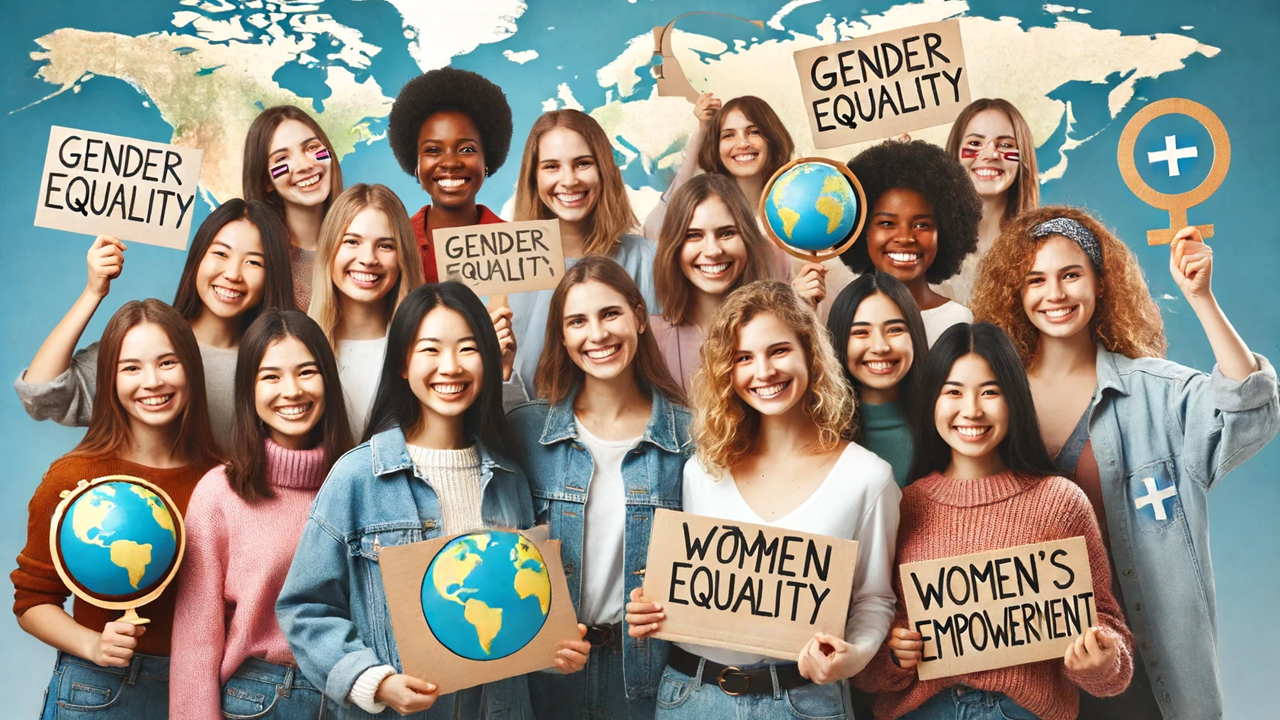2025 UN Declaration Elevates Gender Equality as Core to SDG Achievement
The Declaration, warmly welcomed by UN Women, underscores the urgency of placing gender equality at the heart of policymaking, resource allocation, and implementation strategies for all 17 SDGs.

At the 2025 High-Level Political Forum (HLPF) — the United Nations’ central platform for reviewing progress on the Sustainable Development Goals (SDGs) — world leaders adopted a landmark Ministerial Declaration reaffirming gender equality as fundamental to sustainable development and global peace. The outcome marks a renewed global commitment to empowering all women and girls, just five years ahead of the 2030 SDG deadline.
The Declaration, warmly welcomed by UN Women, underscores the urgency of placing gender equality at the heart of policymaking, resource allocation, and implementation strategies for all 17 SDGs. It reaffirms the legacy of the Beijing Platform for Action and builds momentum toward Beijing+30, the 30th anniversary of the historic 1995 Fourth World Conference on Women.
“This Declaration is a resounding affirmation that we cannot build a sustainable, peaceful, and just world without full equality for women and girls,” said Sima Bahous, Executive Director of UN Women.
Addressing Persistent Barriers
The Declaration identifies and calls for the dismantling of persistent and structural barriers that hinder the progress of women and girls globally. These include:
-
Poverty and economic marginalization
-
Unpaid care and domestic work
-
Discriminatory laws, policies, and social norms
-
Gender-based violence, including child marriage and female genital mutilation
-
Intersecting forms of discrimination affecting women with disabilities, Indigenous women, rural women, and others
It further commits countries to addressing gender disparities in education, health, and employment, calling for universal access to inclusive education and sexual and reproductive health and rights.
“The rights of rural and Indigenous women to land, natural resources, and decision-making must be protected and prioritized,” the Declaration states.
Economic Empowerment and Care Infrastructure
A key focus of the Declaration is the call to invest in care systems — a vital strategy for enabling women’s economic participation. The COVID-19 pandemic exacerbated global care inequalities, spotlighting the burden borne disproportionately by women and girls.
Governments are now urged to build gender-responsive social protection systems, ensure equal pay, expand access to decent work, and support women-led entrepreneurship and digital inclusion.
This includes ensuring women are equipped to participate meaningfully in emerging green and digital economies, where structural gender divides continue to grow.
Women in Leadership, Peace, and Crisis Response
The 2025 Declaration places special emphasis on women’s full, equal, and meaningful participation in leadership, public life, and peacebuilding. Citing women’s pivotal roles in climate resilience, humanitarian response, and post-crisis recovery, the Declaration calls for their inclusion in all levels of decision-making — from local councils to national cabinets and multilateral forums.
“We must move beyond token representation and create space for women’s leadership in shaping the world’s most critical decisions,” said UN Secretary-General António Guterres, addressing the opening of the HLPF.
Climate Action and Food Security
The Declaration links gender equality to climate action and food security, highlighting women’s crucial contributions to small-scale fisheries, coastal economies, and sustainable agriculture. It commits governments to integrating gender analysis into climate strategies, ensuring that women’s knowledge and leadership are valued and applied in climate mitigation and adaptation.
This includes recognizing the specific vulnerabilities faced by women farmers, fisherfolk, and rural communities, who often lack access to land, credit, and climate-resilient technologies.
A Pivotal Moment Ahead of Beijing+30
The 2025 HLPF comes just months before the global community marks the 30th anniversary of the Beijing Declaration and Platform for Action, a foundational document for advancing gender equality and women’s rights worldwide. The new Ministerial Declaration is both a recommitment to the vision of Beijing and a recognition of the unfinished work ahead.
With less than five years to achieve the SDGs, the Declaration serves as a political signal and action mandate. It calls on all governments to translate commitments into action, backed by robust financing, gender-disaggregated data, and accountability mechanisms.
“Without concrete investment in the rights and empowerment of all women and girls, the 2030 Agenda will remain out of reach,” UN Women emphasized.
What’s Next: Accountability and Action
UN Women and its partners now call on governments, donors, and civil society to ensure that the commitments outlined in the Declaration are implemented on the ground. This includes:
-
Strengthening legal and institutional frameworks for gender equality
-
Mainstreaming gender in all national SDG action plans
-
Funding women’s organizations and movements
-
Tracking progress through gender-specific indicators
As the world confronts intersecting crises — from climate change and armed conflict to economic inequality — the empowerment of women and girls must be seen not as a separate issue, but as central to solving them all.










